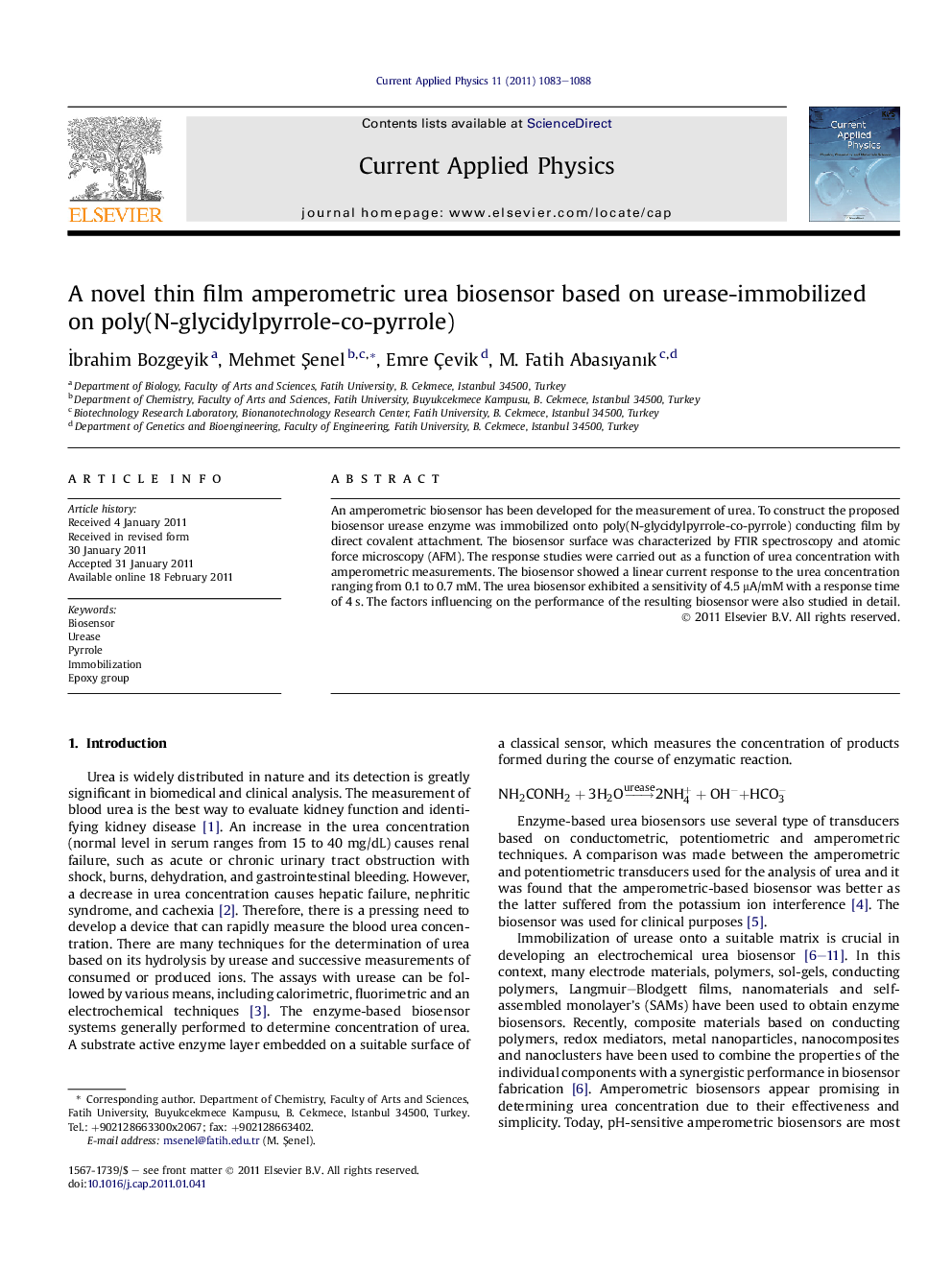| Article ID | Journal | Published Year | Pages | File Type |
|---|---|---|---|---|
| 1787556 | Current Applied Physics | 2011 | 6 Pages |
An amperometric biosensor has been developed for the measurement of urea. To construct the proposed biosensor urease enzyme was immobilized onto poly(N-glycidylpyrrole-co-pyrrole) conducting film by direct covalent attachment. The biosensor surface was characterized by FTIR spectroscopy and atomic force microscopy (AFM). The response studies were carried out as a function of urea concentration with amperometric measurements. The biosensor showed a linear current response to the urea concentration ranging from 0.1 to 0.7 mM. The urea biosensor exhibited a sensitivity of 4.5 μA/mM with a response time of 4 s. The factors influencing on the performance of the resulting biosensor were also studied in detail.
► Poly(N-glycidylpyrrole-co-pyrrole) film enable direct covalent immobilization without any reagent. ► The biosensor seems to be simple to prepare, fast to respond, inexpensive and sensitive. ► The conducting polymer film used in this study is an effective platform to produce reliable biosensors.
